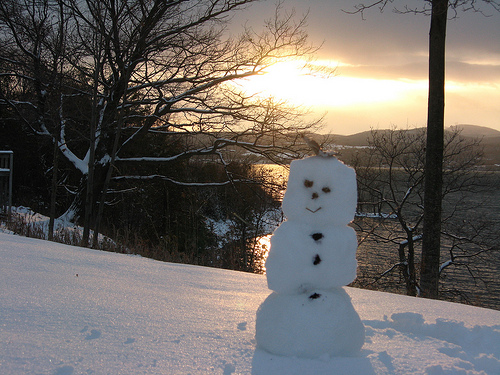March marks a turning point in the annual cycle of the lake. As the sun creeps higher into the sky the lake begins to absorb more heat energy than it releases to the cold winter air. The exact time of switch in any given year depends on the frigidity of the winter and the number of cloudy days where sunlight is scattered and therefore less intense.
We notice the days lengthening, but it is the increasing angle of the sun that plays a greater role in warming Lake Champlain. When the sun is at a higher angle above the horizon, the intensity of heat reaching a given surface area increases. The angle of the sun varies with the time of day, the season, and the latitude of a lake, reaching its peak at midday, during the summer, and closer to the equator.
It’s easy to demonstrate the effects of light angle on energy intensity. Shine a flashlight on a piece of paper and trace the area illuminated. As you vary the angle of the flashlight from directly above toward the side while keeping its distance constant, the area of the paper illuminated stretches and grows. Since the intensity of the light hasn’t changed, each unit area of the paper must receive less energy.
However, the period when the lake is warmest or coldest does not coincide with the highest and lowest periods of available sunlight. Lake Champlain receives the least light during the December winter solstice, but has the least energy at the end of February or early March. The most light is available during the June solstice, but the lake contains the most heat energy in early August. These lags occur because water has such a tremendous ability to hold heat.
